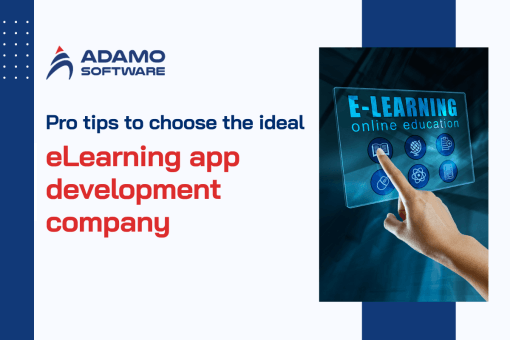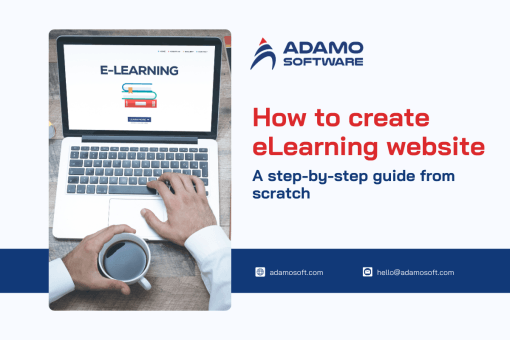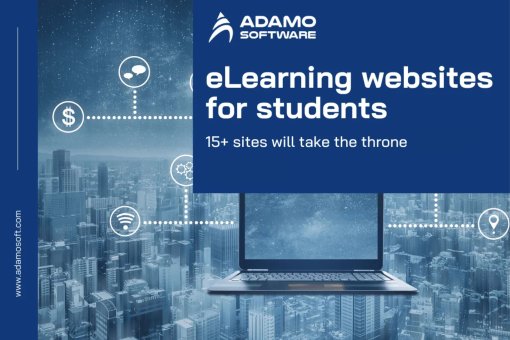How to create an online learning platform: The ultimate roadmap to success
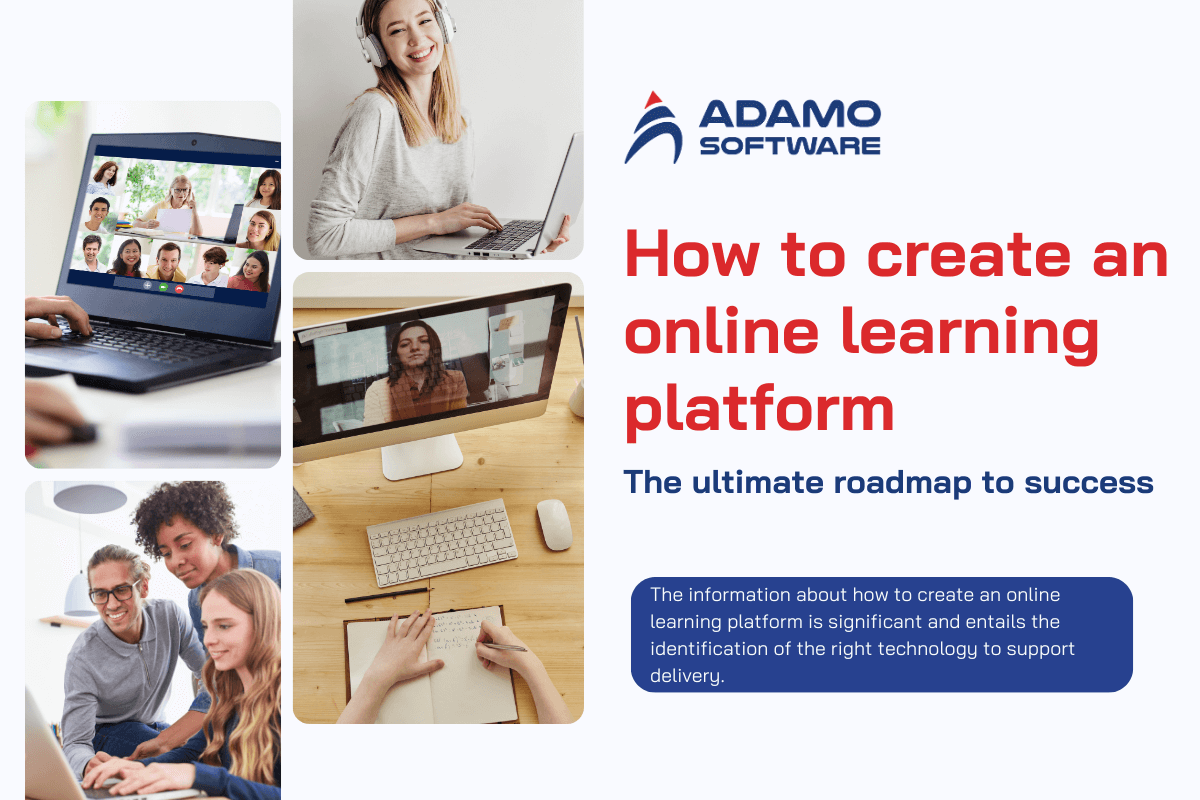
Education in contemporary society has been expanded beyond the classroom. Thus, it makes the online learning environment crucial to the delivery date of education. Whether for academic, professional, or personal development, the demand for online education is growing. Still, the information about how to create an online learning platform is immensely significant. This process entails the identification of the right technology to support delivery. It also includes designing interfaces to support learners’ engagement and integrating features for learners and instructors.
Before thinking about how to create an online learning platform, consider the many types of platforms. Each has its characteristics. The development process should consider the expected target audience, starting with course marketplaces and extending to platforms for kids or professionals. There is transformative knowledge on satisfying educational demands and building a sound, efficient, replicating e-learning business.
I. How to create an online learning platform: Most popular types
Regarding structures, a better model for an online learning platform is the first step to success. This helps achieve the intended target group and objective. Understanding the kind most in demand would also prove useful for creating an effective online learning platform.
1. Course Marketplace
A course marketplace enables instructors to upload courses for sale. Learners can purchase different subjects of their choice. The major advantage is that it provides fertile ground for any company. This is true for companies aiming to capture a massive and diverse client base.
Features
- Multi-course offerings: instructors can teach different courses in any subject.
- Payment processing system: Provides payments between learners and instructors.
- Rating and review system: Learners can leave feedback to help other learners choose suitable courses.
- Flexible learning schedules: learners can take their courses at their convenience.
- Media integration: Increases the sample of available content by supporting videos, text, and quizzes for more interactive content.
2. Learning Management System (LMS)
An LMS enables educators to organize and monitor learning. It is common in learning institutions and other business organizations.
Features
- Progress tracking: A primary function is following the learner’s performance and progress.
- Course management: instructors can develop and personalize course materials.
- User management: It allows the teachers, students, and administrators to handle roles.
- Assessment tools: instructors can offer quizzes, assignments, and examinations to assess the level of achievement.
- Certification tracking: the participants are given certificates at the end of the courses.
3. Specialized Learning Platforms
Other specialized platforms serve niche educational niches such as children’s learning or language learning. Most of these platforms are specific to the needs of their clientele.
Features
- Niche-specific content: educationally formatted especially to fit the learning capabilities of the targeted people.
- Interactive tools: features such as gamification to boost the interaction levels.
- Progress tracking: emphasizing small, fashionable learning thresholds or objectives.
- Mobile accessibility: Facilitates learning on the go via smartphones and tablets.
Knowledge of these types is paramount on how to create an online learning platform. All the models have features specially developed for creating an effective learning environment.
II. Benefits of online learning website development
There are many benefits to creating an online learning platform for learners, educators, and businesses. Let’s explore these benefits:
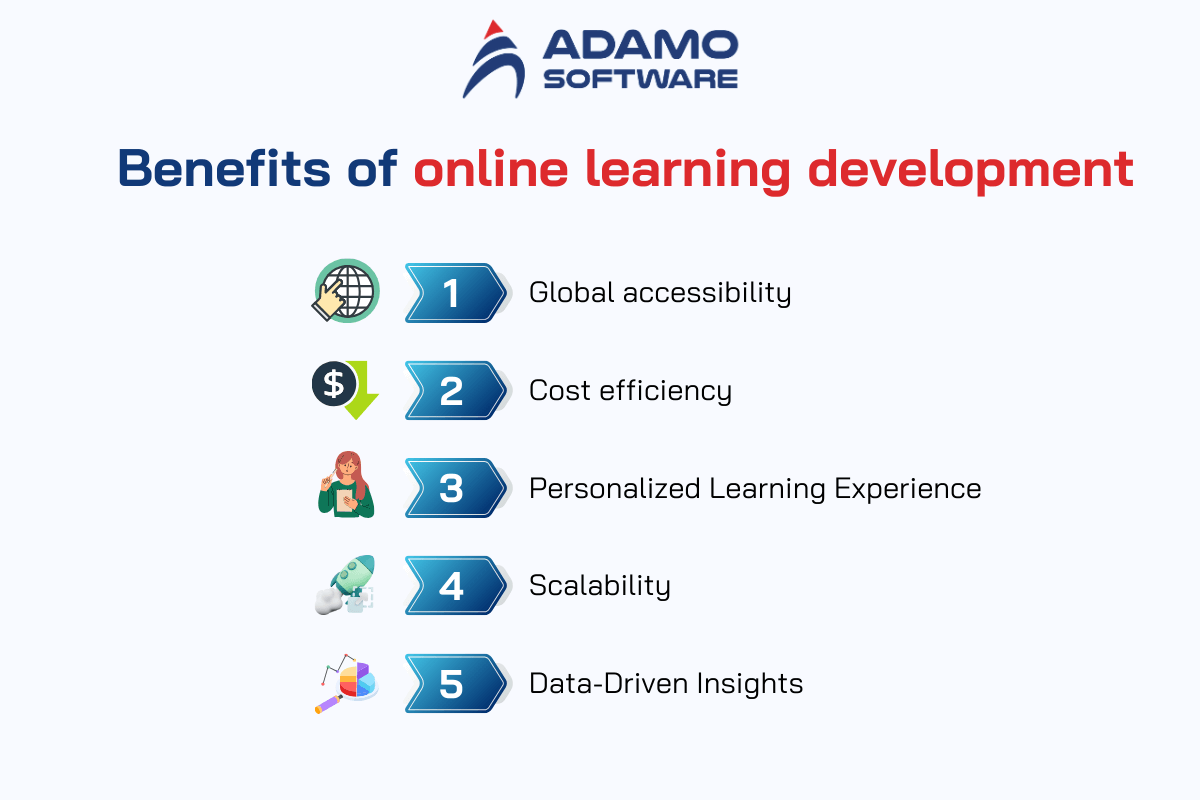
1. Global Accessibility
An online learning program makes the years of students from all regions possible. This global accessibility enables learners to combat limiting factors such as geographical location and time. Therefore, this makes education accessible to everyone. It is possible to create an online learning platform that embraces and enhances the delivery of education.
2. Cost Efficiency
Another advantage that can be attributed to online learning websites is the low cost of operation. Prescribed settings of teaching and learning entail space, content, and facilities. Thus, these factors may be costly to implement as compared to F2F. Learning how to create an online learning platform makes it possible to reduce such costs among institutions and learners.
3. Personalized Learning Experience
One of the major benefits of online learning platforms is the aspect that learning can be individualized. Due to technology, the student can learn at his/her convenience. This allows the student to review his/her area of difficulty. Online learning platforms provide a better experience and increase engagement. Therefore, they enable the user to acknowledge how to create an online learning platform in their desired way.
4. Scalability
A well-built online learning platform is crucial to expand and accommodate many users. This scalability makes the platform flexible to growth in usage without needing many changes in architecture. Consequently, understanding how one can develop an online learning platform that can grow organically is the way forward and is sustainable.
5. Data-Driven Insights
Synchronous, asynchronous, and blended learning in online learning websites provide measurement and analysis of students’ success and points of weakness. Acquired knowledge on how to create an online learning platform will also help in collecting data that will enhance better decision-making.
When employed collectively, these foundational advantages can guarantee that learning how to create an online learning platform is a successful process. And this process will help to produce cheap and effective education.
III. Must-have features when creating an online learning platform
When designing an online learning platform, it is important to understand how to include necessary features that make the process effective and engaging. Such features must therefore be created to foster easy learning, enable interaction, and ease of access. Below are the must-have features to consider:
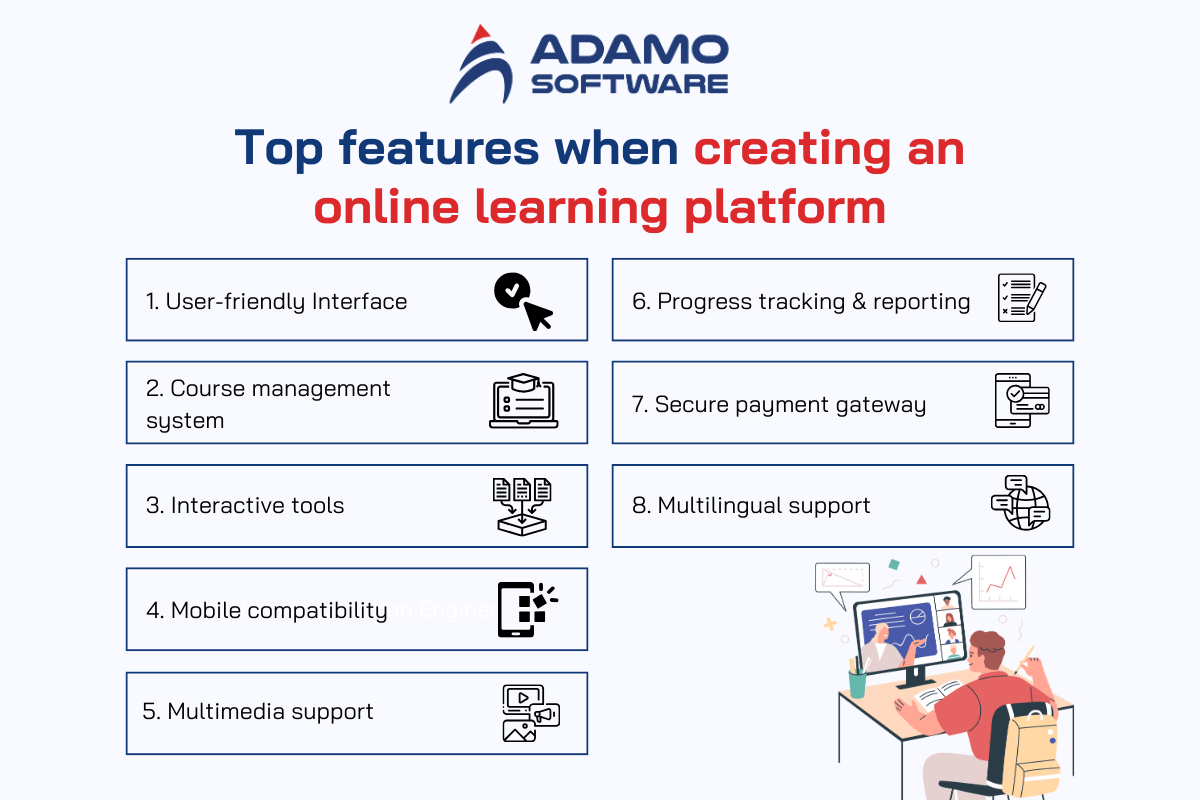
1. User-Friendly Interface
The system should be easy to navigate for students, the instructor, or any other person who operates it. It also means that the platform must be minimalist and easy to navigate. The platform should also enable the users to locate courses, monitor progress, and interact with instructors. Thus, usability should be emphasized when creating an online learning platform. This increases engagement levels.
2. Course Management System
Effective course management allows teachers to create, organize, and maintain online courses effectively. This feature helps them to post content, arrange lessons, and include a set of different assessments. When designing an online learning platform, one must integrate an effective course management system to offer structured learning.
3. Interactive Tools
Games like quizzes, polls, and developing discussion forums help to engage the learners. Such tools enable learners to quiz themselves, ‘interact’ with other students in that class, and seek clarifications in real time. It is important when teaching how to create an online learning platform with high levels of engagement. For that reason, all these interactive tools should be included.
4. Mobile Compatibility
Since most people today have mobile devices, the platform must be optimized for mobile devices. Smartphones and tablets should allow learners to access the content displayed and navigate on it without any significant loss of functionality. Another factor when learning how to create an online learning platform should be mobile-friendly and accessible.
5. Multimedia Support
The platform must accommodate video, audio, and written materials and content. This enables the educators to be prepared and make the way to teach the students, depending on their styles. It is important to ensure that multimedia support is incorporated while developing an online learning environment. As it makes the learning process more interesting and efficient.
6. Progress Tracking and Reporting
Progress tracking helps learners identify their performance levels and helps the instructors. This feature obtains current information on the completion rates of the courses taken, and the grades obtained. Progress tracking and reporting also obtain the areas that the students need to improve on. It is easy to assimilate progress tracking into an online learning environment to provide feedback in the learning process.
7. Secure Payment Gateway
If the platform is designed to make money through the sale of courses, then a seamless payment solution should be integrated. It enables users to make safe payments for courses they want to buy using any payment method. Making certain that there is a dependable means of acceptance of payments is very crucial.
8. Multilingual Support
It will accommodate learners, thus expanding clients’ baseline in various countries. This feature allows the user to switch between languages. It is an important way of enhancing the interaction of the people of the different countries. However, to understand how to create an online learning platform, when aiming at an international audience, the presence of a multi-language option is also highly beneficial.
When paying attention to the above features, you know how to create an online learning platform to ensure an enhanced learning experience.
IV. A step-by-step guide on how to create an online learning platform
The development of an online learning platform is a process that comprises several well-coordinated phases to have a smooth flow. In this guide, you will discover how to create an online learning platform that works, what to consider, and what to avoid.
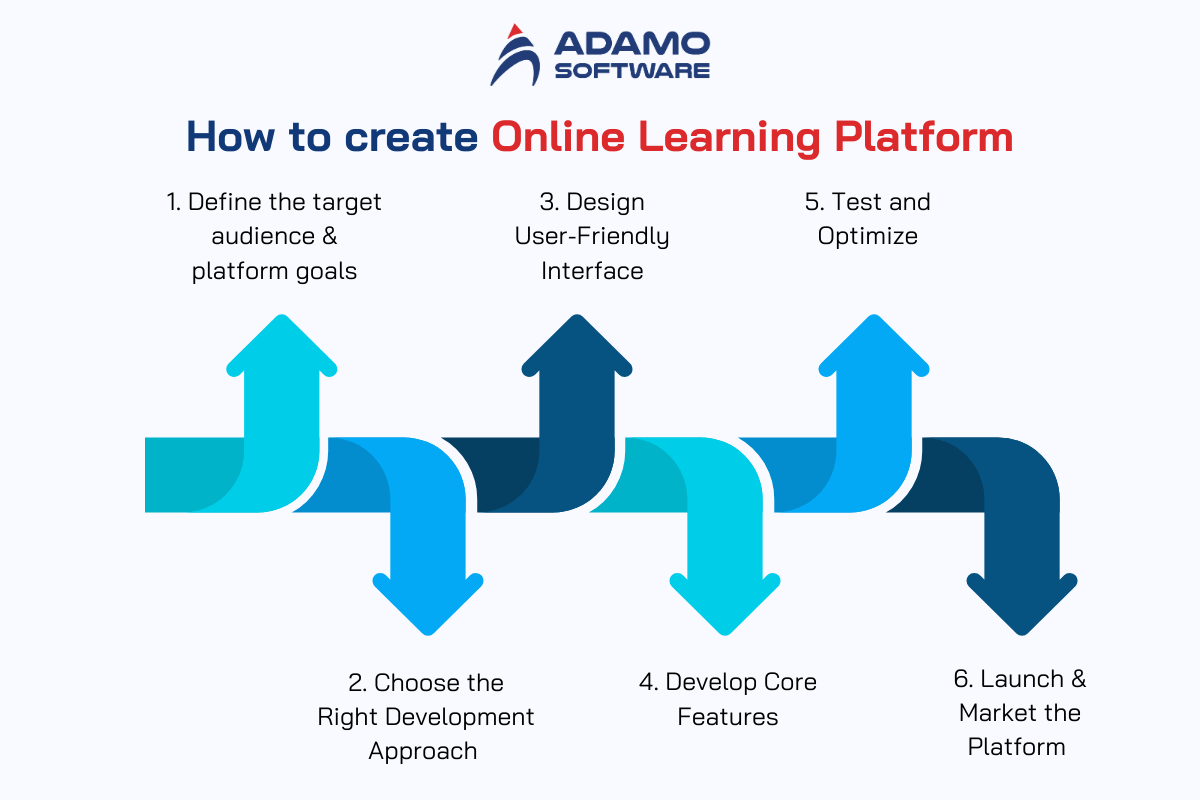
Step 1: Define the target audience and platform goals
The first aspect to consider in how to create an online learning platform is determining who the platform addresses and what it should do. It’s important to know your audience’s needs. Deciding if you are targeting students, working professionals, or hobbyists will influence the content as well as the features of the platform.
Step 2: Choose the Right Development Approach
Secondly, given the target customers’ specifications, the next critical step is determining the development strategy. There are two ways of developing the platform. One is from scratch, and there are available frameworks. The choice in favor of beginning with the building from scratch seems to be more advantageous. The frameworks known enable faster creation of the platform.
Step 3: Design User-Friendly Interface
The design phase involves understanding usability and what makes a good or ‘intuitive’ user interface (UI). This ensures that the users can move around the platform, search for the course, and do tasks. A smooth design is important when you understand how to develop an LMS engaging to the users.
Step 4: Develop Core Features
All the main options, like course management, payment gateways, a course progress bar, and a multimedia toolkit, are created. These features are important because they help the platform work as desired. To successfully create an online learning platform, consider these functional aspects.
Step 5: Test and Optimize
Verification is critical to identify faults and enhance the platform’s speed. They include the manual tests and the automated tests to confirm that all is well. Since this is a test, those supplying the feedback should be sure that the platform performs well in any conditions and fine-tune it.
Step 6: Launch and Market the Platform
Challenges come next only after testing, making it the right time to launch. The last process of how to create an online learning platform is advertising. Therefore, there will be people who will be using the platform. Get access to the internet through marketing techniques that include SEO, social media advertising, and partnerships.
With these steps, you know how to create an online learning platform to meet the audience’s needs.
V. How to build an online learning platform: Cost breakdown
It is essential to understand different cost distributions. The cost is influenced by the platform type, the number of features, and developers. Here’s a detailed overview of the key cost components:

1. Development Team
The overall cost found to be considerably high is the cost incurred by the development team. Regardless of whether it is an in-house staff or outsourcing, there would be certain costs, which have been listed below. A team with individuals who know how to create an online learning platform may command a higher price. However, their efficiency will make development easier.
2. Design and User Interface
The interaction design of the screen should be pleasant, as learners’ cost is important to get them engaged. Some of the costs depend on the kind of UI/UX design complexity involved in the entire project. If someone is thinking of how to create an online learning platform that deserves customers’ attention, at first sight, they are focused on usability. It would be better to allocate the money to the professional design team.
3. Core Features and Functionality
Additional core functionalities of course management, payments, and media are priced by their complexity if developed. These features should be well implemented for it to support high-quality online learning. This usually results in higher development time and cost.
4. Hosting and Maintenance
Finally, after developing the platform, it must be hosted and maintained. Hence, there will always be recurrent costs incurred. Hosting means the environment is properly maintained, while updates fix problems and optimize functionality. These costs persist over time and depend on the size of the platform in question.
5. Testing and Quality Assurance
That is why various checks and tests are needed before the final launch. This entails checking if the platform will run as designed without any hitch. Again, the cost of testing is another factor that should be considered. Especially when learning how to develop an online learning platform effectively per the financial capacity.
6. Marketing and Promotion
The next thing, which is very crucial, is how to get people to come to the platform. Marketing expenses incurred on search engine optimization, social media marketing, advertising, and partnerships. The fees of these efforts include the promotion’s size and the audience to be reached.
Altogether, it is crucial to know these cost components to determine how to create an online learning platform. It is possible to have a platform that users will love. But at the same time, it is financially viable and achieves its objectives.
Also read: Online learning platform development: Key features and cost for a successful platform
VI. Why choose Adamo Software for your education software development journey?
It is also crucial in deciding how to create an online learning platform. The key idea for Adamo Software is that clients can receive credible expert assistance. Based on years of experience and attention to contemporary technology, you will be offered the best solutions. Therefore, we can make your dream come true.

Since our foundation, Adamo Software has concentrated on producing user-friendly, easily scalable, and feature-rich platforms. Knowing how to create an online learning platform includes fundamental functions. Our team ensures both the users and administrators of the platform are satisfied. This means a smooth process is conducted from the beginning to the end.
In addition, at Adamo Software, we have made it our responsibility to provide ongoing support for your platform. In particular, the success of an online learning platform depends on the partnership with a reputable and professional company, namely, Adamo Software.






